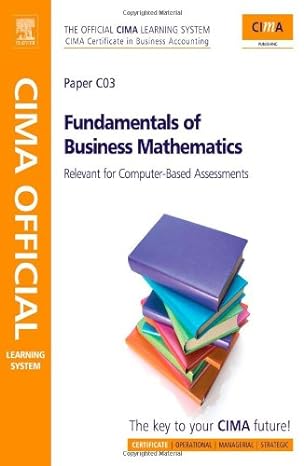Answered step by step
Verified Expert Solution
Question
1 Approved Answer
10 Part 6 of 6 0.66/1.1 points awarded Required information Use the following information to answer questions 42-44 [The following information applies to the questions
10 Part 6 of 6 0.66/1.1 points awarded Required information Use the following information to answer questions 42-44 [The following information applies to the questions displayed below.] Lehighton Chalk Company manufactures sidewalk chalk, which it sells online by the box at $22 per unit. Lehighton uses an actual costing system, which means that the actual costs of direct material, direct labor, and manufacturing overhead are entered into work-in-process inventory. The actual application rate for manufacturing overhead is computed each year; actual manufacturing overhead is divided by actual production (in units) to compute the application rate. Information for Lehighton's first two years of operation is as follows: Scored Sales (in units) Production (in units) Production costs: Variable manufacturing costs Fixed manufacturing overhead Selling and administrative costs: Variable Fixed Year 1 Year 2 3,100 3,100 3,600 2,600 $15,840 $11,440 19,440 19,440 12,400 12,400 11,400 11,400 Selected information from Lehighton's year-end balance sheets for its first two years of operation is as follows: LEHIGHTON CHALK COMPANY Selected Balance Sheet Information Based on absorption costing Finished-goods inventory Retained earnings Based on variable costing Finished-goods inventory Retained earnings End of Year 1 $ 4,900 8,520 End of Year 2 $ 0 14,440 End of Year 1 $ 2,200 5,820 End of Year 2 $ 0 14,440 Case 8-44 Absorption and Variable Costing; Effect on the Balance Sheet; Continuation of Preceding Case (LO 8-1, 8-4) Required: 4. Compute the amount by which the year-end balance in finished-goods inventory declined during year 2 (i.e., between December 31 of year 1 and December 31 of year 2): Using the data from the balance sheet prepared under absorption costing. Using the data from the balance sheet prepared under variable costing. 5. Refer to your calculations from requirement 4. Compute the difference in the amount by which the year-end balances in finished- goods inventory declined under absorption versus variable costing. Then compare the amount of this difference with the difference in the company's reported operating income for year 2 under absorption versus variable costing. 6. Notice that the retained earnings balance at the end of both years 1 and 2 on the balance sheet prepared under absorption costing is greater than or equal to the corresponding retained earnings balance on the statement prepared under variable costing. Will this relationship hold true at any balance sheet date? Required 4 Required 5 Required 6 Refer to your calculations from requirement 4. Compute the difference in the amount by which the year-end balances in finished-goods inventory declined under absorption versus variable costing. Then compare the amount of this difference with the difference in the company's reported operating income for year 2 under absorption versus variable costing. (Negative amounts should be indicated by a minus sign.) Amount of Difference Amount of decline in finished-goods inventory balance during year 2 Reported operating income for year 2 (absorption versus variable costing) $ (2,700) $ (2,700) Show less Required 4 Required 5 Required 6 Notice that the retained earnings balance at the end of both years 1 and 2 on the balance sheet prepared under absorption costing is greater than or equal to the corresponding retained earnings balance on the statement prepared under variable costing. Will this relationship hold true at any balance sheet date? Yes, this relationship will always hold true at any balance sheet date. Yes, this relationship will hold true at any balance sheet date because income reported under variable costing will exceed income reported under absorption costing during any period that inventory increases. No, this relationship will not always hold true at any balance sheet date because of timing differences. Increases and decreases in inventory have no effect on reported income between the two costing methods
Step by Step Solution
There are 3 Steps involved in it
Step: 1

Get Instant Access to Expert-Tailored Solutions
See step-by-step solutions with expert insights and AI powered tools for academic success
Step: 2

Step: 3

Ace Your Homework with AI
Get the answers you need in no time with our AI-driven, step-by-step assistance
Get Started


